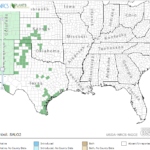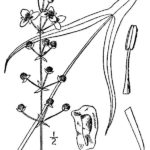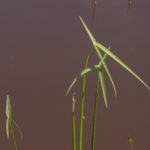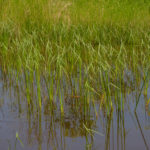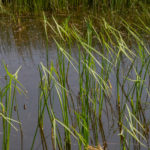Sagittaria longiloba
USDA, NRCS. 2018. The PLANTS Database (http://plants.usda.gov, 28 March 2018). National Plant Data Team, Greensboro, NC 27401-4901 USA.
Illustration: USDA-NRCS PLANTS Database / Britton, N.L., and A. Brown. 1913. An illustrated flora of the northern United States, Canada and the British Possessions. 3 vols. Charles Scribner’s Sons, New York. Vol. 1: 101.
What is Longbarb Arrowhead?
Other common spellings and names include: flecha de agua, long-lobe arrowhead, long-barb arrowhead.
Physical Characteristics
Leaves:
- Straight or straight-spreading
- Leaf blades triangular or egg-shaped
- Shaped like an arrowhead
- Portion above base lobes 6 inches long & 4 inches wide
- Base lobes sword-shaped
- Base lobes usually twice as long as the body of the blade
Flowers:
Fruit:
- One seed
- Does not open to release seed when ripe
- Egg-shaped
- 0.9 inches long & 0.05 inches wide
Stem:
- Commonly branching at the lowest whorl
- Main axis can have up to 12 whorls
- Bracts egg or sword shaped
- Up to 1 inch long
Where Does it Grow?
Longbarb arrowhead can be found in the shallow water of swamps, ditches and ponds. It is especially common in roadside ditches.
Pros and Cons of Arrowhead
The tubers of arrowheads are prized foods by ducks, geese, muskrats, and nutria. Seeds are sometimes consumed by ducks. Submerged portions of all aquatic plants provide habitats for many micro and macro invertebrates. These invertebrates in turn are used as food by fish and other wildlife species (e.g. amphibians, reptiles, ducks, etc.). After aquatic plants die, their decomposition by bacteria and fungi provides food (called “detritus”) for many aquatic invertebrates.

